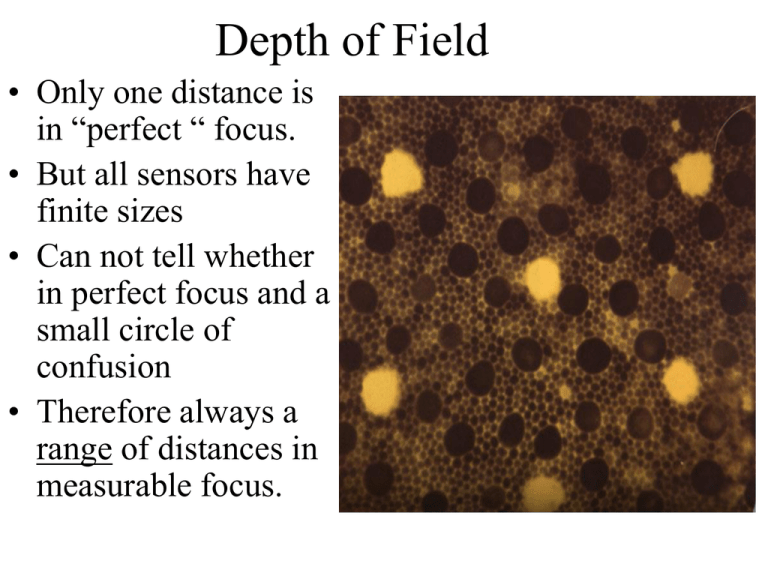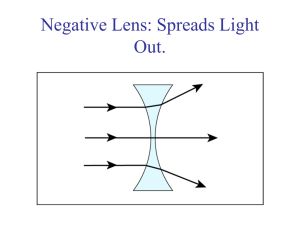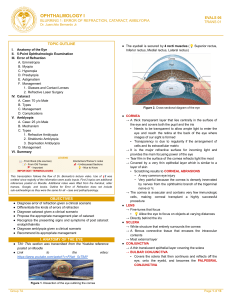Depth of Field
advertisement

Depth of Field • Only one distance is in “perfect “ focus. • But all sensors have finite sizes • Can not tell whether in perfect focus and a small circle of confusion • Therefore always a range of distances in measurable focus. Small pupil and Lens • Narrower cones of light. • Smaller circles of confusion • Larger depth of field. . Retinal Surface Optic Disk Optical Conditions in the Eye Eye ball Marmor & Ravin, 1997, p.3. Eye Chart? Unger, 1982 Human Eye: Two lenses Cornea Strong (in air) Fixed Problems: Myopia Hyperopia Astigmatism Lens Weak Adjustable Presbyopia Yellowing Cataracts Lens In Focus Light from distant light Image Size • • • • A positive lens collects light over a large area Cones of light. Point of cone: focused Cone diameter varies from point Light Refraction in the Eye Cornea -chief refractive surface of the eye Lens -shape is changed by accommodation to focus images on the retina. Emmetropia (Normal) When the eye is emmetropic, the eye is exactly the right size so that the image formed by the optics in the front falls on the retina. Myopia (Nearsighted) When the eye is myopic, the eye is too long and the point of focus is in front of the retina. A blurry image falls on the retina. Myopia When the eye is myopic, objects close to the eye will be in focus. Myopia = near-sighted Distant Object Near Object Lens • With any lens, objects at different distances are imaged at different distances behind the lens. • In myopia, near objects may be in focus.








